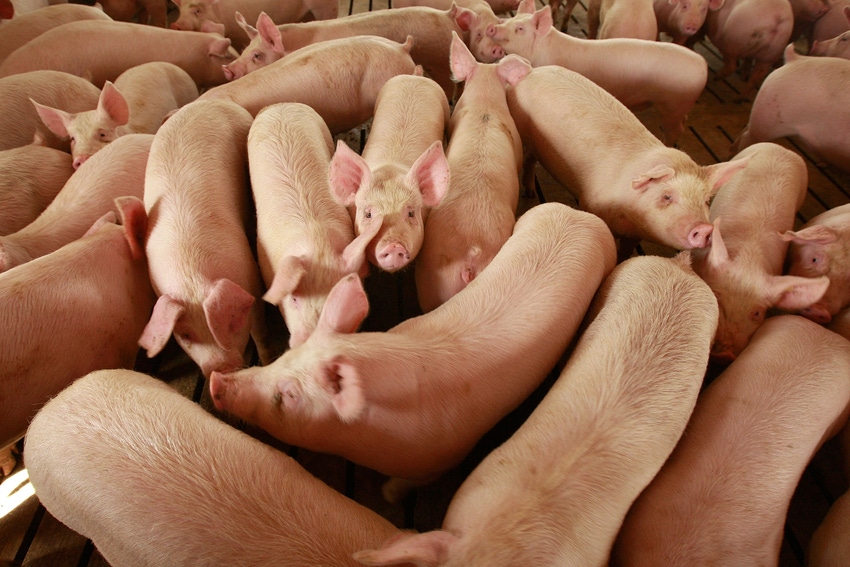New $3m grant helps researchers tackle PRRS virus
University of Minnesota scientists to collaborate on study of how PRRS virus evolves to understand disease spread and advance mitigation and control efforts.
September 9, 2019

A new grant of nearly $3 million will help University of Minnesota College of Veterinary Medicine (CVM) researchers and collaborators at the University of Edinburgh’s Roslin Institute in Scotland investigate how porcine reproductive and respiratory syndrome (PRRS) virus evolves and spreads.
According to the CVM announcement, the research will help scientists and producers anticipate a herd’s susceptibility to different strains of PRRS virus and customize mitigation efforts accordingly. The data generated could be used to inform future vaccine designs.
The grant is funded jointly by the National Institute of Food & Agriculture, National Science Foundation, National Institutes of Health and U.K. Biotechnology & Biological Sciences Research Council. It will cover the next four years of research.
PRRS costs the U.S. swine industry more than $560 million each year. First described in Indiana, North Carolina, Iowa and Minnesota in the late 1980s, the virus rapidly spreads within barns and among farms, the announcement said.
CVM noted that since the emergence of PRRS in the U.S., researchers have worked to reduce its impact. However, while a host may build immunity to certain viral strains of PRRS after infection, the strain — as with any RNA virus — can counter-evolve to survive in that host and spread.
Also, viruses often compete for hosts, and some are better than others at evading the host’s immunity, depending on what that host is used to. This process is called “multi-strain dynamics” and has been investigated extensively in human medicine but rarely in animals, until now, the college added.
This project aims to help farmers understand how the PRRS virus evolves, changes, moves and persists, CVM said. It also helps producers explore ways of outmaneuvering PRRS.
As with many RNA viruses, the PRRS virus rapidly evolves and acquires genetic changes over time. However, scientists can study and potentially predict the genetic diversity of the PRRS virus in pigs better than they can study other viruses in people or wildlife because of the rich availability of data: Since they know where farms are, they know what the distribution of hosts looks like. They also know how animals are moving among farms, and a lot of sequencing already is ongoing, so scientists know where and when strains of the virus occur.
Dr. Kim VanderWaal, assistant professor in the CVM department of veterinary population medicine (VPM) and principal investigator on the project, said studying the evolution of the virus "will help us better understand and hopefully control PRRS, but it will also help us understand the evolution and drivers of genetic diversity in viruses in humans and other animals.”
The project is partially built on data collected by the Morrison Swine Health Monitoring Project at the University of Minnesota, which tracks the occurrence of PRRS in roughly 50% of the U.S.'s breeding swine population. The project is coordinated by VPM associate professor Cesar Corzo, who is also on the research team for the new grant.
“One of the reasons Minnesota is so ideally situated for this research is that this data set is one of a kind,” VanderWaal said.
Another specific asset to this team’s approach is the contributions of Dr. Declan Schroeder, VPM virologist and associate professor whose lab was able to develop a new technique that can describe the full genomic strain profile of a PRRS virus within 24 hours of sampling.
Schroeder said this research can give veterinarians a better tool to rapidly diagnose the infection in animals.
Another part of this project aims to track the spread of different strains of PRRS, including newly evolved ones. “An emergence of a new strain was last seen in 2014,” VanderWaal said. “We see a general pattern where a significant new type or strain appears every three to five years.”
Recently, researchers at The Roslin Institute developed a new epidemiological model to investigate the effectiveness of vaccines for preventing, mitigating or eliminating infectious diseases in livestock, particularly PRRS.
The new model shows that the control or even elimination of PRRS through vaccination may well be within reach, as long as the vaccine sufficiently speeds up recovery and reduces virus replication, Roslin announced.
You May Also Like

.png?width=300&auto=webp&quality=80&disable=upscale)

